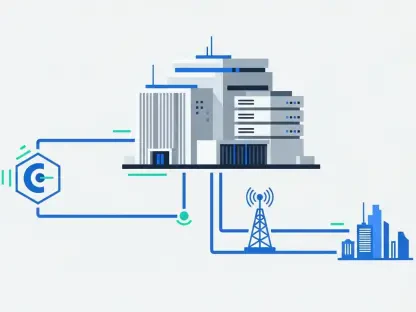Imagine a silent, invisible storm erupting from the Sun, hurtling toward Earth with the power to cripple satellites, disrupt power grids, and endanger astronauts in deep space. These destructive forces, known as space weather events, are becoming an increasingly pressing concern as humanity’s reliance on technology—both terrestrial and orbital—continues to grow. The potential for widespread damage from solar phenomena like interplanetary coronal mass ejections (ICMEs) underscores an urgent need for advanced warning systems. While current monitoring tools provide some notice, the timeframes are often too short to enact meaningful protections. A groundbreaking approach involving solar sail technology offers a promising solution to extend these critical warning windows. This article explores the escalating threats posed by space weather, the limitations of existing detection methods, and how innovative projects leveraging solar sails could transform the way these dangers are anticipated and mitigated.
The Growing Threat of Space Weather
Space weather, defined as fluctuations in the environment between the Sun and Earth, poses a significant risk to modern infrastructure. Driven by solar events such as ICMEs—massive bursts of magnetic fields and charged particles—these disturbances can trigger geomagnetic storms. While such storms often produce mesmerizing auroras, their darker side includes the potential to disrupt satellite communications, cause widespread power outages, and expose astronauts to harmful radiation. The scale of this threat is immense, as society becomes ever more dependent on technology vulnerable to these natural phenomena. With global assets worth trillions at risk, the consequences of a major event could be catastrophic. Historical precedents, like the 1859 Carrington event that caused telegraph systems to fail spectacularly, serve as a stark reminder of what’s at stake. Understanding the mechanisms behind space weather is the first step toward developing effective strategies to protect vital systems.
The economic and human toll of space weather disruptions cannot be overstated. Estimates suggest that a severe solar storm could jeopardize up to $2.7 trillion in assets worldwide, impacting everything from financial markets to essential services. Beyond monetary losses, there are critical safety concerns for those venturing into space. Astronauts on future missions to the Moon or Mars face heightened radiation risks during geomagnetic storms, necessitating timely warnings to seek shelter. On Earth, airlines must reroute flights over polar regions to avoid exposing passengers and crew to elevated radiation levels. Meanwhile, military and commercial reliance on space for navigation, surveillance, and communication amplifies the strategic importance of safeguarding these assets. As space tourism and satellite constellations expand, the urgency to address these vulnerabilities grows. The intersection of economic stability, human safety, and technological dependence highlights why space weather prediction must be prioritized.
Shortcomings of Current Monitoring Systems
Current space weather monitoring relies heavily on satellites positioned at the L1 Lagrange point, approximately 900,000 miles from Earth, where they can detect incoming solar events. These satellites provide a warning window of about 40 minutes before a storm impacts Earth—a timeframe that, while valuable, is often insufficient for comprehensive mitigation efforts. Operators of satellites, power grids, and other critical infrastructure need more lead time to implement protective measures, such as adjusting orbits or shutting down vulnerable systems. The limited scope of this warning period restricts the ability to fully prepare for the cascading effects of geomagnetic disturbances. Moreover, the data gathered at L1 offers only a snapshot of solar activity, leaving gaps in the broader understanding of how these events evolve as they approach Earth. This constraint underscores a critical gap in the existing framework for space weather forecasting.
Satellites in closer orbits, such as low Earth orbit or geosynchronous orbit, play a complementary role by measuring how Earth’s magnetic field responds to solar wind. However, these positions are less effective for directly observing incoming threats, as they operate within the planet’s protective magnetic shield rather than upstream of it. This limitation means that while these satellites provide useful data on local conditions, they cannot offer the early detection needed to anticipate major events. As space becomes a hub for commerce, security, and exploration, the shortcomings of current systems become more glaring. The demand for innovation in monitoring technology is driven by the realization that extended warning times are not merely a scientific aspiration but a necessity for global safety. Addressing these deficiencies requires a bold rethinking of how satellites are positioned and powered to intercept solar threats at greater distances from Earth.
Solar Sails as a Revolutionary Tool
A pioneering initiative known as the Space Weather Investigation Frontier (SWIFT) offers a potential breakthrough in addressing the limitations of current space weather monitoring. Led by researchers at the University of Michigan, SWIFT aims to position a satellite farther from Earth than ever before—at 1.3 million miles, beyond the L1 Lagrange point. This strategic placement could extend warning times for solar events to nearly 60 minutes, providing a crucial buffer for preparation. Unlike traditional satellite systems constrained by orbital mechanics and fuel requirements, SWIFT introduces a novel approach to achieve this ambitious reach. The project represents a significant leap forward in the quest to protect critical infrastructure from the unpredictable forces of space weather. By pushing the boundaries of satellite deployment, SWIFT could redefine the standards of early detection and response in this vital field of study.
The key to SWIFT’s innovative positioning lies in solar sail technology, a fuelless propulsion method that harnesses sunlight to maneuver spacecraft. These sails, spanning an area roughly a third the size of a football field, reflect sunlight to generate thrust, allowing satellites to maintain orbits closer to the Sun without the constant need for traditional fuel. This sustainable approach not only reduces operational costs but also enables long-term missions in previously unattainable locations. Solar sails represent a paradigm shift in space technology, building on successful demonstrations by earlier missions and paving the way for future applications. For space weather monitoring, this means the ability to station satellites at optimal vantage points for detecting solar threats well before they reach Earth. The integration of such cutting-edge propulsion into projects like SWIFT highlights the potential for transformative advancements in safeguarding both space-based and terrestrial assets.
Implications for Safety and Resilience
Extended warning times enabled by solar sail technology could fundamentally change how space weather threats are managed across multiple sectors. Satellite operators, for instance, would gain the ability to adjust orbits in advance, minimizing damage from atmospheric drag during geomagnetic storms. Airlines could reroute flights over polar regions to protect passengers and crew from radiation exposure, while astronauts on deep space missions would have more time to seek shelter from harmful solar particles. Even enthusiasts chasing the northern lights would benefit from additional notice to reach optimal viewing locations. The broader impact of nearly 60 minutes of warning—compared to the current 40—lies in the opportunity to implement proactive measures rather than reactive ones. This shift could prevent widespread disruptions, preserving the functionality of systems that modern society depends on daily.
Beyond immediate responses, the adoption of solar sail-powered monitoring systems like SWIFT carries profound implications for global resilience. Enhancing the ability to predict and mitigate space weather events strengthens economic stability by protecting trillions in assets tied to satellite networks and power grids. It also bolsters national security by ensuring uninterrupted communication and surveillance capabilities during solar disturbances. Furthermore, as humanity ventures deeper into space, improved forecasting becomes a cornerstone of human safety, supporting ambitious missions to the Moon, Mars, and beyond. The development of such technology is not merely a scientific endeavor but a strategic investment in the future of space exploration and terrestrial infrastructure. By addressing the silent threats of space weather with innovative solutions, a foundation is laid for a more secure and sustainable presence in the cosmos.
Building a Future of Advanced Preparedness
Reflecting on the strides made in space weather monitoring, it’s evident that past efforts laid crucial groundwork through the deployment of satellites at key orbital points like L1. Their contributions, though limited by short warning windows, provided essential insights into solar dynamics and geomagnetic impacts. Historical events and recent satellite losses drove home the devastating potential of unchecked solar storms, prompting a collective push for better solutions. The emergence of projects like SWIFT, with their reliance on solar sail technology, marked a turning point in addressing these challenges head-on. Looking ahead, the focus must shift to accelerating the development and deployment of such systems. Collaborative efforts between governments, research institutions, and private industries should prioritize funding and testing to ensure these innovations reach operational status swiftly. By investing in extended warning capabilities, the global community can better shield vital infrastructure and human endeavors from the unpredictable forces of space, paving the way for a safer technological era.









